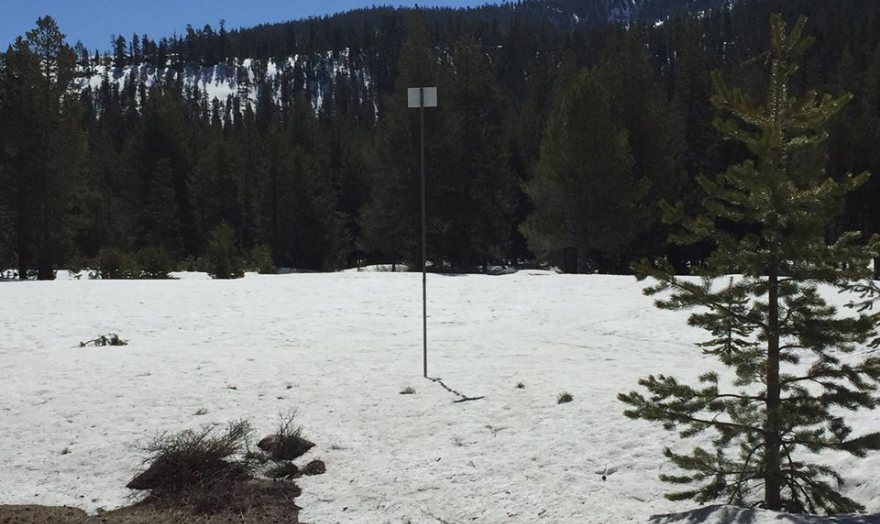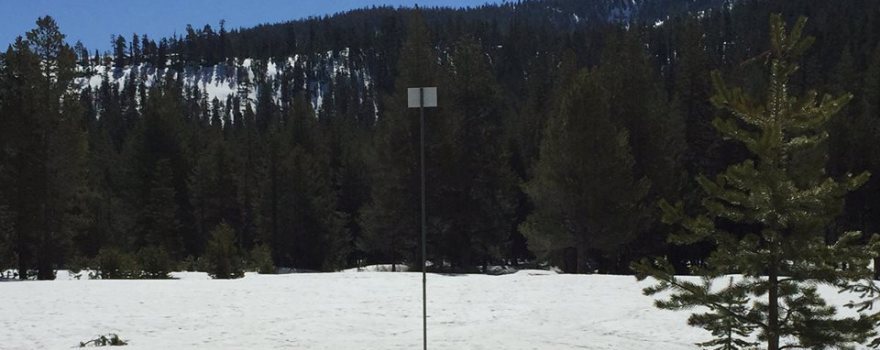
From the Department of Water Resources:
Today’s manual snow survey by the Department of Water Resources (DWR) at Phillips Station in the Sierra Nevada found a Snow Water Equivalent (SWE) of 27.8 inches, 190 percent of the May 1 long-term average there (14.6 inches).
Electronic measurements indicate the water content of the statewide snowpack today is 42.5 inches, 196 percent of the May 1 average. The SWE of the northern Sierra snowpack is 39.9 inches (199 percent of average); the central and southern Sierra readings are 47.1 inches (202 percent of average) and 37.6 inches (180 percent of average), respectively.
Today’s readings will help hydrologists forecast spring and summer snowmelt runoff into rivers and reservoirs. The melting snow supplies approximately one-third of the water used by Californians.
“California’s cities and farms can expect good water supplies this summer,” said DWR Acting Director Bill Croyle. “But this ample snowpack should not wash away memories of the intense drought of 2012-2016. California’s precipitation is the most variable in the nation, and we cannot afford to stop conserving water.”
Snowpack water content is measured manually on or near the first of the month from January to May. The Phillips snow course, near the intersection of Highway 50 and Sierra-at-Tahoe Road, is one of hundreds surveyed manually throughout the winter. Manual measurements augment the electronic readings from about 100 sensors in the state’s mountains that provide a current snapshot of the snowpack’s water content.
The first of April is normally when snowpack water content is at its peak.
Frank Gehrke, chief of the California Cooperative Snow Surveys Program, conducted DWR’s survey today at Phillips and said of his findings, 2017 has been “an extremely good year in terms of the snowpack.”
Gehrke said the snowpack is encouraging in terms of surface water supplies. “The thing we’re looking out for is primarily the southern Sierra, where we have full reservoirs and in some cases a huge snowpack,” he said. “We want to make sure that we prudently manage that so we don’t cause any downstream issues.”
California’s reservoirs are fed both by rain and snowpack runoff. A majority of the state’s major reservoirs are above normal storage levels for today’s date. Lake Oroville in Butte County, the State Water Project’s (SWP) principal reservoir, is 91 percent of average for the date (74 percent of its 3.5-million acre-foot capacity). Shasta Lake north of Redding, the federal Central Valley Project’s largest reservoir with a capacity of 4.5 million acre-feet, is at 109 percent of average (94 percent of capacity).
Earlier this month, DWR increased its estimate of this year’s SWP supply to 100 percent of requests for contractors north of the Sacramento-San Joaquin Delta and 85 percent of requests for other contractors, the highest since the 100-percent allocation in 2006.
——————————————–
Sign up for daily email service and you’ll always be one of the first to know!
- Sign up for daily emails and get all the Notebook’s aggregated and original water news content delivered to your email box by 9AM. Breaking news alerts like this one, too. Sign me up!
 Maven’s Notebook
Maven’s Notebook
constantly watching over the world of California water


